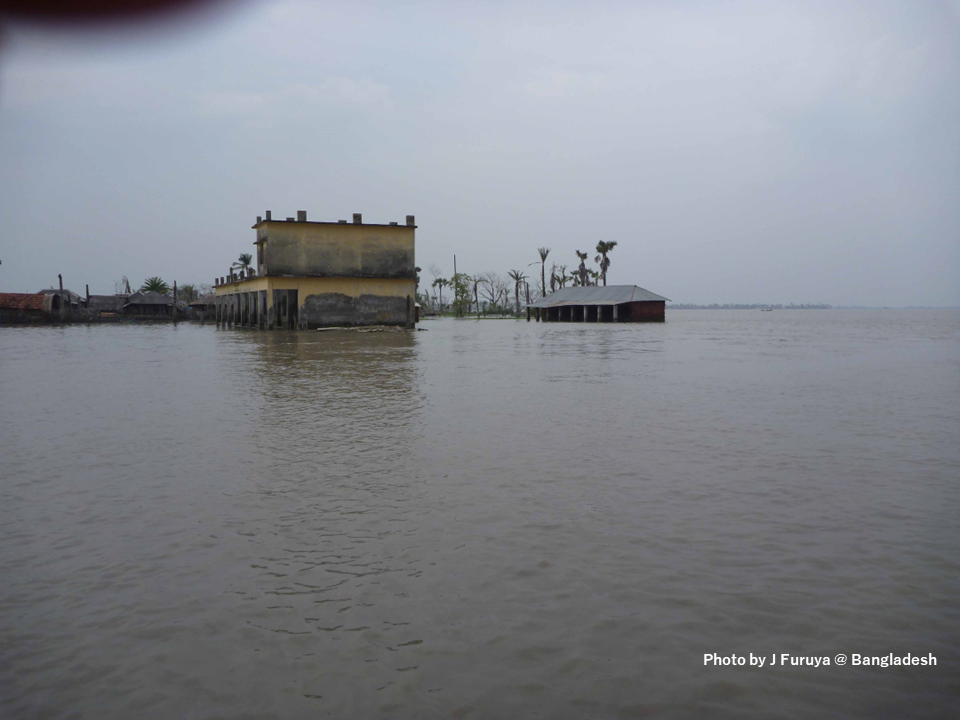Pick Up
881. Impact of Disasters on Agriculture and Food Security

881. Impact of Disasters on Agriculture and Food Security
Agriculture is highly dependent on natural resources and climatic conditions, making it one of the most vulnerable sectors to disaster risk. Recent disasters have undermined previous improvements in food security and could undermine the sustainability of the agri-food system. Information is needed to anticipate and manage the risks facing the system and to integrate disaster risk management.
On October 13, the Food and Agriculture Organization of the United Nations (FAO) released a report titled The impact of disasters on agriculture and food security, which estimates a global loss of $3.8 trillion in crop and livestock production over the past 30 years. This figure translates into an average annual loss of $12.3 trillion per year. This translates into an average annual loss of $123 billion, or 5% of global agricultural GDP. In particular, low-income countries bear a heavier burden, with disaster losses amounting to 15% of agricultural GDP, while small island developing states face losses of 7% of their agricultural GDP.
While this report is the first attempt at global estimates for crops and livestock, it does not include systematic data on disaster losses in the fisheries and forestry sectors. The report emphasizes that improved data and information covering all sub-sectors of agriculture would enable effective responses to disasters.
The report highlights an escalating trend in agricultural production losses in recent years, averaging 69 million tons of cereals annually - equivalent to France's grain production in 2021 - and 40 million tons of fruits, vegetables and sugar, equivalent to the combined production of Japan and Vietnam in 2021.
Geographically, Asia bears the brunt of economic losses due to disaster impacts, with Africa, Europe, and North America also suffering significant damage. Interestingly, while Asia suffers a 4% loss in agricultural value added, Africa suffers almost twice as much at almost 8%, demonstrating pronounced regional disparities in the extent of damage.
The frequency of disasters has increased from about 100 per year in the 1970s to about 400 per year in the last two decades. The increase in both frequency and intensity, exacerbated by climate change, is exacerbating social and environmental vulnerabilities, resulting in greater damage.
Disasters, once they occur, trigger cascading impacts across multiple systems and sectors, including climate change, poverty, inequality, population growth, pandemic health emergencies, unsustainable land use, armed conflict, and environmental degradation.
Small rainfed farmers are more vulnerable and directly affected by disasters. Proactive measures are needed to build resilience by preventing and reducing risks in agriculture. The report estimates that for every $1 invested in preventive measures, farmers can expect $7 in benefits (including avoided agricultural losses).
The report proposes three priority actions to improve disaster risk management and enhance agricultural production and livelihoods. These actions include improving data and information on the impact of disasters on all sectors of agriculture, including crops, livestock, aquaculture and forestry; promoting a multi-sectoral approach to risk reduction through policy integration; and increasing investments in agricultural resilience to reduce disaster risks and improve agricultural production and livelihoods.
Reference
FAO. 2023. The Impact of Disasters on Agriculture and Food Security 2023 – Avoiding and reducing losses through investment in resilience. Rome. https://doi.org/10.4060/cc7900en
Contributor: IIYAMA Miyuki (Information Program)
